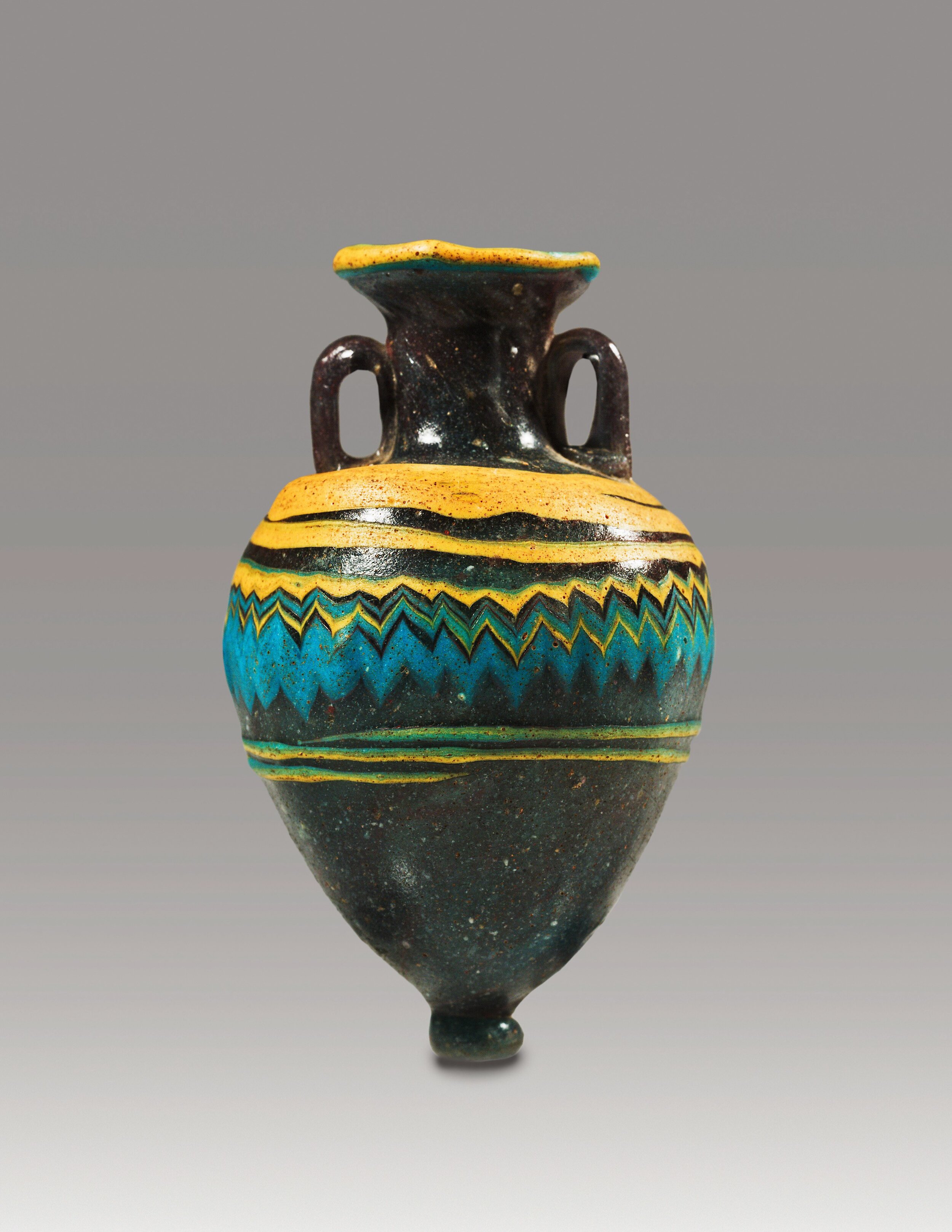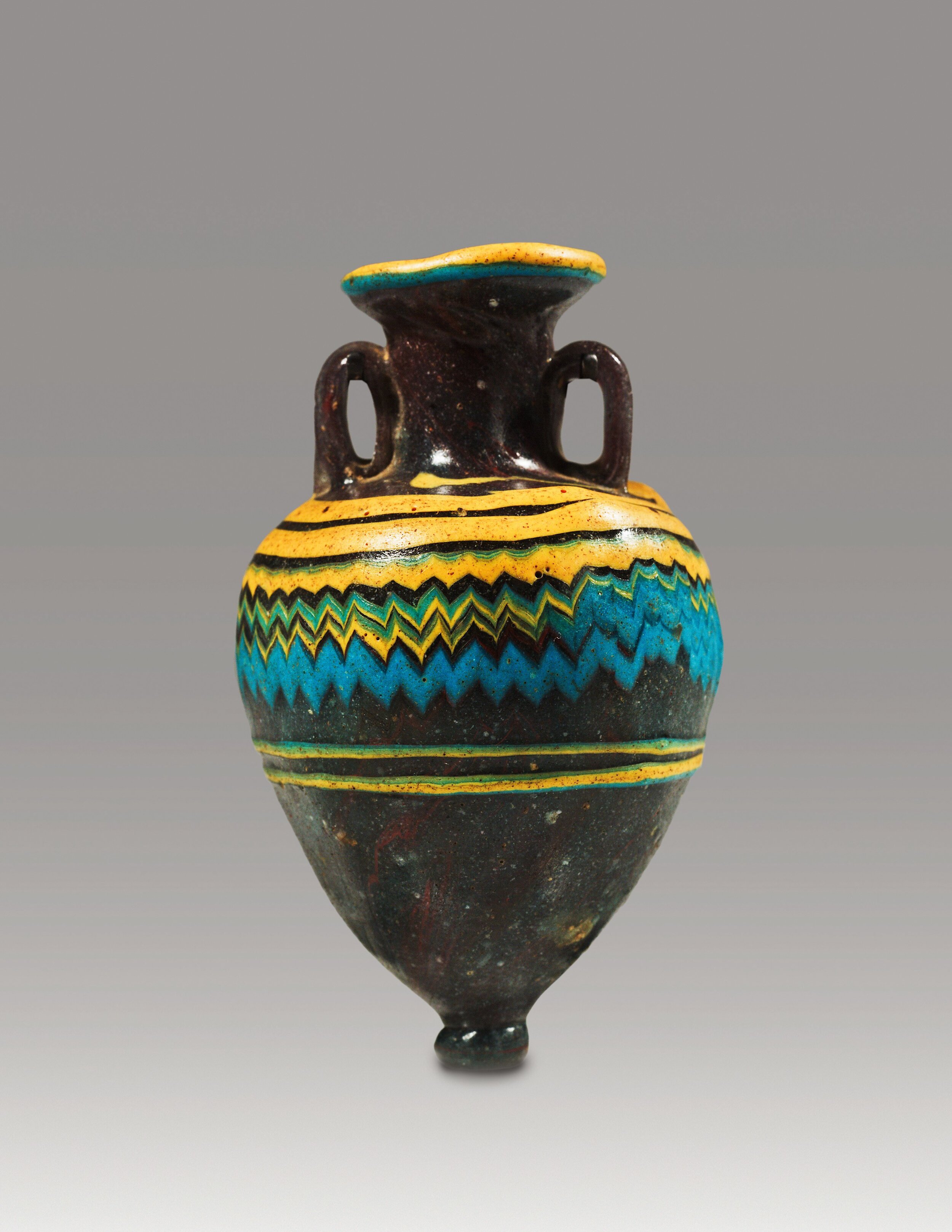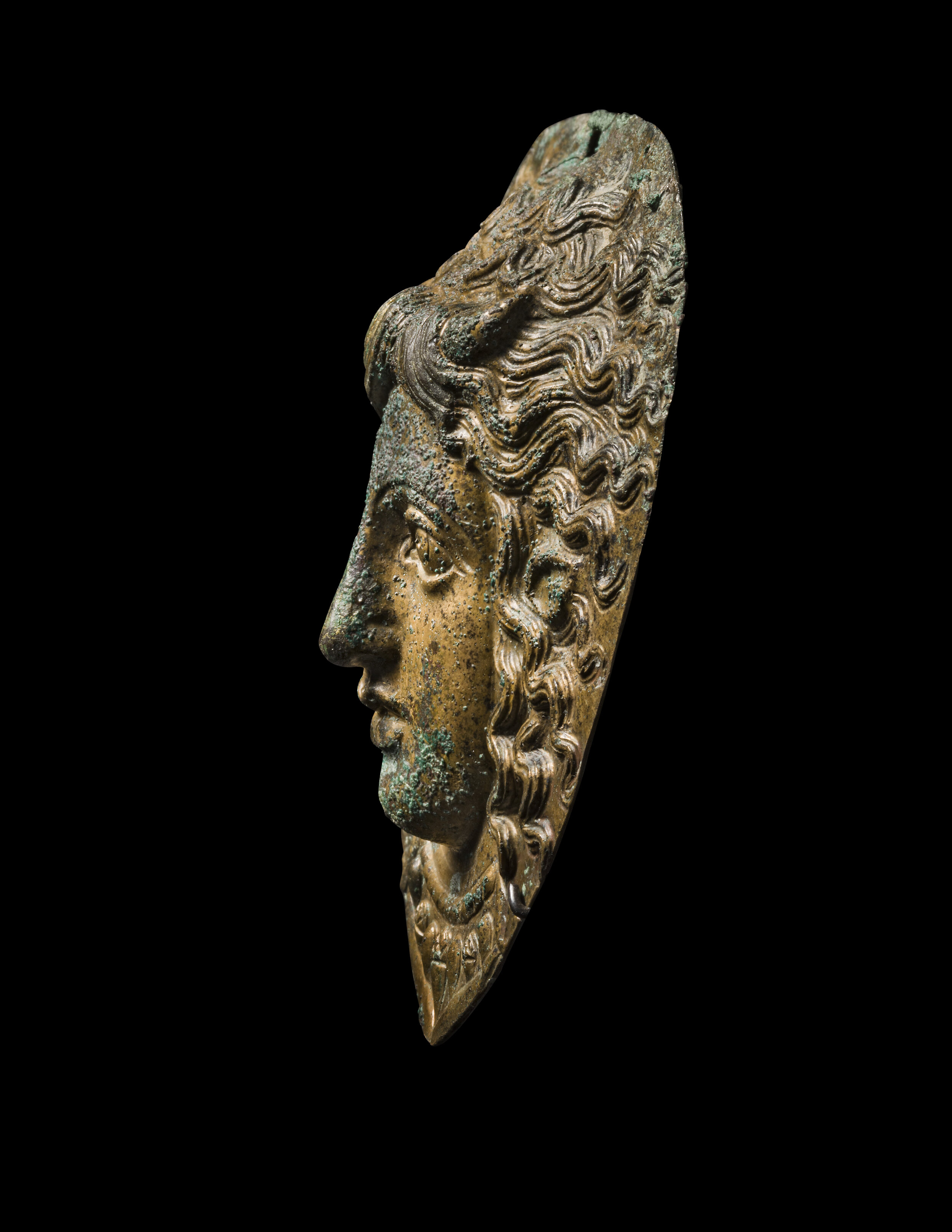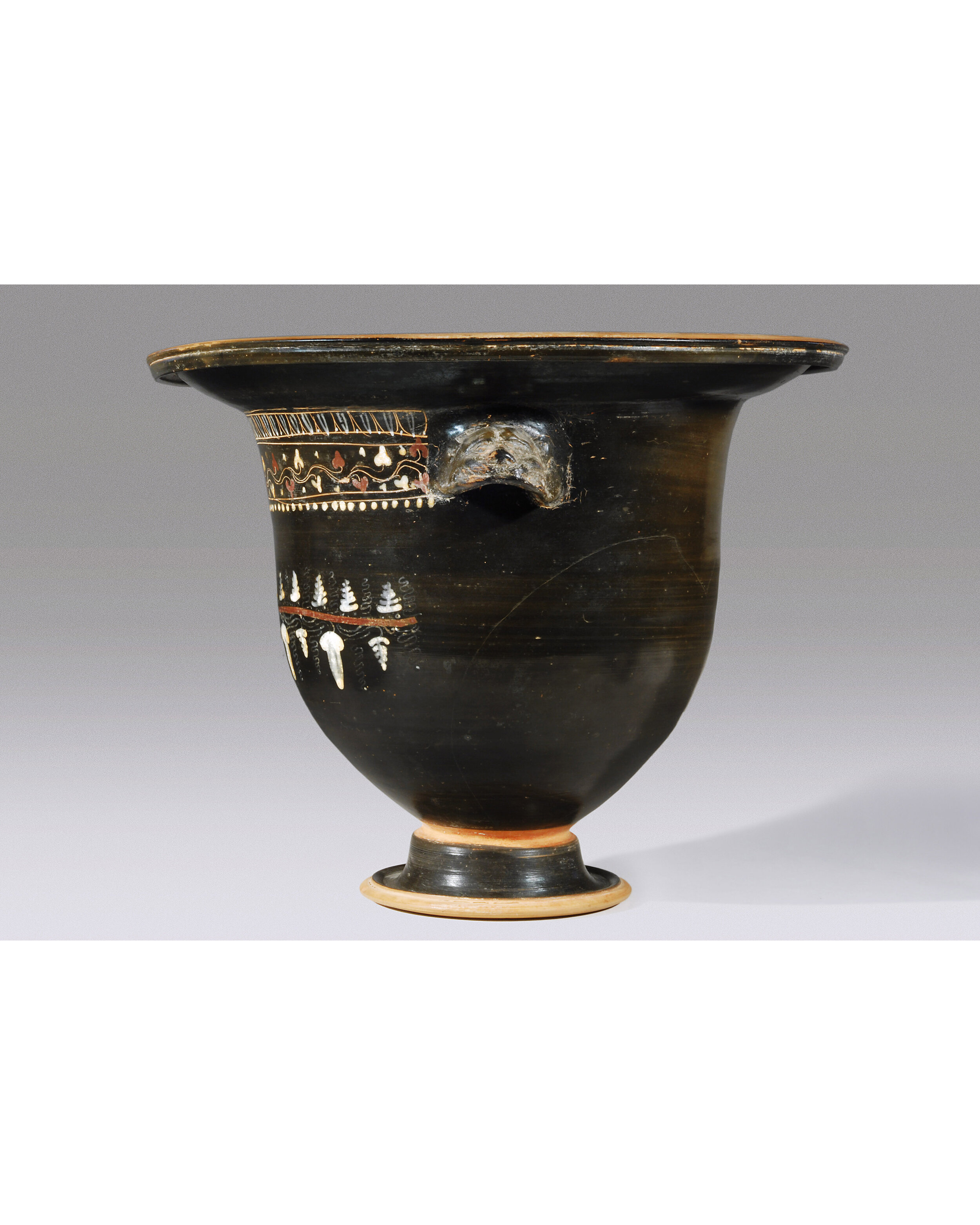Ancient Attic Greek Black-Figure Lekythos with Dionysiac scene


Ancient Attic Greek Black-Figure Lekythos with Dionysiac scene
Greek, Attic, late 6th century B.C.
Terracotta
H: 19.2 cm
PROVENANCE: Ex- J. Gübelin collection, Lucerne, Switzerland, collected prior to 1970
Serial No: 18682
The shape of this lekythos – ovoid body to rounded shoulder, small disk-shaped base – again recalls types from the 6th century. Dionysos is the principal figure of the scene represented on the body. He is surrounded by his usual followers: two maenads and two satyrs, who are in the midst of jumping frenetically while executing their ecstatic dance. The god, on the other hand, is tranquilly seated on a diphros (a folding stool with feet sculpted in the shape of cat’s paws): he is represented in profile and follows a very “Classical” iconography: Dionysos is entirely enveloped in his long chiton, his forehead is bound with a wreath of ivy and he wears his hair and beard long. In his right hand – the only part of his body that is visible - Dionysos holds one of his habitual attributes, a kantharos.
Although at first glance, the appearance of Dionysos on funerary vases may be surprising, it is explained by the complex nature of this god of “the other” and “the different” and especially by his multiple connections with the world of the dead: born from the thigh of Zeus, his father, the infant Dionysos was torn to pieces and eaten by the Titans before being reborn thanks to the help of Zeus (or of Rhea according to another version): twice born, Dionysos therefore became an Olympian god and an immortal. Like so many rustic divinities - Dionysos is most well known as the god of grapes and wine, but he is more generally the god of the vital liquid, of fecundity, of trees and fruits – he is blessed with a strong chtonic character, which he shares with all of the gods involved in the cycle of vegetation. Like Demeter, Persephone, etc., Dionysos appears and disappears periodically into Hades, within the depths of the earth. The style of this lekythos is refined and many of the details and the postures of the figures are well executed. The drawing is certainly influenced by the works of the famous painter Antimenes and his circle.
Condition:
The vase is in an excellent state of preservation with glossy black paint and details applied in white (notably the bodies of the maenads) and purple.
Bibliography
For the style cf. for example: Corpus Vasorum Antiquorum Münich 14, 2005, pl. 11, p. 18, 4 (inv. 1551); pl. 50, p. 51, 1 (N.I.9396).









